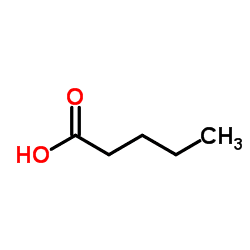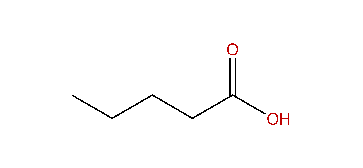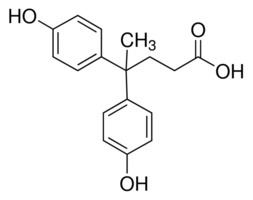Formula C5H10O2 Molar mass 102.13 g/mol | Density 930 kg/m³ Melting point -34.5 °C Appearance Colorless liquid | |
 | ||
Related compounds Boiling point 186 to 187 °C (367 to 369 °F; 459 to 460 K) | ||
Valeric acid, or pentanoic acid, is a straight-chain alkyl carboxylic acid with the chemical formula C5H10O2. Like other low-molecular-weight carboxylic acids, it has a very unpleasant odor. It is found naturally in the perennial flowering plant valerian (Valeriana officinalis), from which it gets its name. Its primary use is in the synthesis of its esters. Volatile esters of valeric acid tend to have pleasant odors and are used in perfumes and cosmetics. Ethyl valerate and pentyl valerate are used as food additives because of their fruity flavors.

Valeric acid appears similar in structure to GHB and the neurotransmitter GABA in that it is a short-chain carboxylic acid, although it lacks the alcohol and amine functional groups that contribute to the biological activities of GHB and GABA, respectively. It differs from valproic acid simply by lacking a 3-carbon side-chain. Mevalonic acid is derived from valeric acid by methylation.

Safety
Valeric acid can cause irritation if it comes into contact with the skin, eyes, or mucous membranes.


